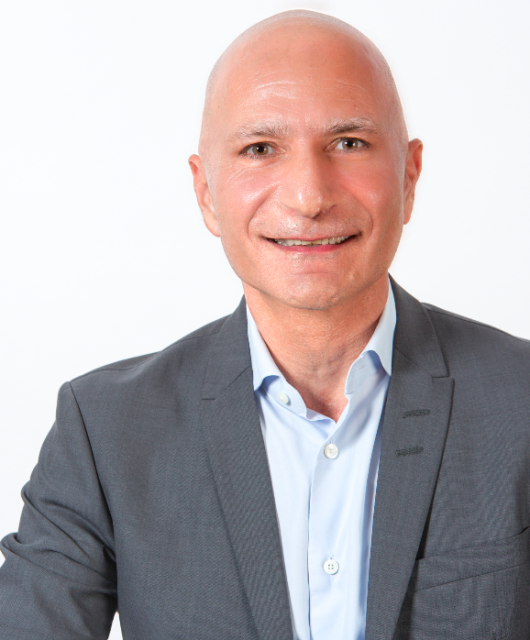The How-tos Of Enacting An Effective Crisis Management Strategy: Q&A With Hill+Knowlton Strategies’ Brendan Hodgson
All brands face crises one time or another, it’s how they communicate, handle and manage it, is what makes or breaks brands and their reputations. Furthermore, the digital era we live in has elevated the impact of crises on the brand health with its new, rapid and diverse dynamics.
We’ve exclusively interviewed Brendan Hodgson, Executive Strategy Director of Hill+Knowlton Strategies EMEA, on how PR agencies can help brands enacting an effective crisis management strategy in the digital age.
BB: Reputation is considered one of the brand’s most valuable assets. One of the core areas where brands and PR cross paths is reputation management. How do PR agencies help brands build a solid and credible reputation?
BH: Today, brands are only as strong as the reputation of the organizations or individuals behind them. Whereas brands exist to drive a desired emotional response and to establish points of differentiation from competitors, reputation reflects the trust of audiences in the brand and, increasingly, the organization and people represented by that brand. More and more, consumer purchasing decisions are no longer solely based on a brand (or the traditional 4 P’s of marketing). They are also now making decisions based on the reputation of the company behind the brand – its purpose, values and contribution to society, how it treats employees, the degree to which it embraces sustainable business practices, the quality of its leaders, and – increasingly – its stance on key issues of the day. Reputation also has an impact on a company’s license to operate. Simply put, governments and publics support companies and industries they trust and actively discourage and frustrate those they don’t.

Good PR agencies understand this dynamic, and work with their clients to ensure that their reputations are as strong as their brands are unique. And where marketers often focus solely on consumers (the primary target of brand campaigns), PR agencies tend to have to manage a much more diverse stable of stakeholders – consumers, publics, governments, suppliers and partners, civil society organizations, employees and others – recognizing that these all can have an impact on an organization’s reputation.
PR agencies play an instrumental role in helping their clients manage and protect their reputations through meaningful engagement with these stakeholders, and through storytelling that is credible, relevant to the audiences they need to reach, and delivered in such a way that captures both hearts and minds – that is authentic, consistent, and compelling. They do this through the ‘owned’ channels of their clients, the media, and by working with trusted third-parties and influencers to validate and amplify those stories.
BB: Many brands are faced with crises that can give a hard blow to their reputation. Effectively managing crises when they arise can become a make it or break it to any brand. Can you give us some insights on what are the pillars of an effective crisis management strategy?
BH: First of all, it’s important to acknowledge that bad things happen to good organizations all the time. It’s how you respond to those situations that will determine whether your reputation remains intact or collapses. In the end, you will be judged on your actions – what you did and when you did it – and how you communicate those actions – clearly, consistently, via the right channels and at the right time, and with empathy for those affected.
I would add that effective crisis management is also about being responsible in how you communicate. Very often we are required to walk clients back from making rash decisions around communicating inappropriately or not at all, taking actions that could further damage reputation, or forgetting to focus on the stakeholders that might matter most to the future of their business – employees, partners, affected communities, policymakers and regulators.
BB: The digital transformation age has given reputation and crisis management a whole new dimension. Reputations can be affected negatively with one single social media post. In a nutshell, and from H+K’s strategy manual, what are the dos and don’ts when handling virally blasted crisis?
BH: No question, social media has forced organizations to rethink their approach to crisis management in many ways. It is accelerating the speed at which an issue becomes a crisis, enabling detractors and advocates to mobilize, shining a light on people and practices that were traditionally hidden from view, and exacerbating the proliferation of misinformation and speculation, to name just a few. And while organizations must be prepared to communicate at the speed of social, they must also be careful not to overreact to potential threats that, had they not responded (or responded differently), might not have become a crisis.
Yes, one post can be a catalyst for a crisis. At the same time, organizations need to understand that in this age of increasing transparency, public criticism – whether justified or unjustified – is the new normal. Knowing when and how to respond will separate a good reputation from one that may suffer. This means having access to the right data to analyze and predict how activity within the digital domain may affect an organization’s reputation and operations – is the post, and the person or people behind it, credible? Does it contain the ingredients – images or documents or credible accusations – that will see the issue escalate to a point that it could create real reputational damage?
Ultimately, organizations need to understand that they have little to no control over what is being said about them in the digital domain – be it by one person or by 1000 people. What they can control, however, is what they do, what they say and how they say it. This means communicating through the right channels, with the right content and tone, and being responsive to – and being seen to be responsive to – to the concerns, if credible, raised by those who are talking negatively about the company. It means thinking about how they can use the power of digital to explain their position in more compelling, relevant and easily understandable formats – through images, infographics, animations or video. It’s also about mobilizing other potentially more credible voices of support to balance or counter criticism. At the same time, no crisis is the same and strategies will be different for virtually every scenario.
BB: Brands work in different cultural contexts. Does cultural differences affect crisis management?
BH: Understanding of local culture is absolutely essential to effective crisis management. While the underlying principles of crisis communication may be the same, organizations must also ensure that factors such as language, tone, preferences for receiving and sharing information, local customs and traditions all must be respected. It’s for these reasons that PR agencies, in addition to understanding the local media, influencer and regulatory landscape, are essential to supporting organizations in navigating cultural hurdles and communicating effectively within a local context.
BB: In your opinion, what would be a perfect example of a brand that was faced by a crisis and was able to turn it into a PR win in the Middle East?
BH: It’s a good question, and there are many examples of both good and bad. However, our policy is to not comment on any crisis activity – ours for reasons of confidentiality, and others as it would be inappropriate to publicly critique or judge an organization – positively or negatively – for the simple reason that we are not privy to their crisis planning and decision-making. Of course, and as we’ve done here, we are always happy to share general best practices and lessons learned from our client engagements and in our analysis of others.





